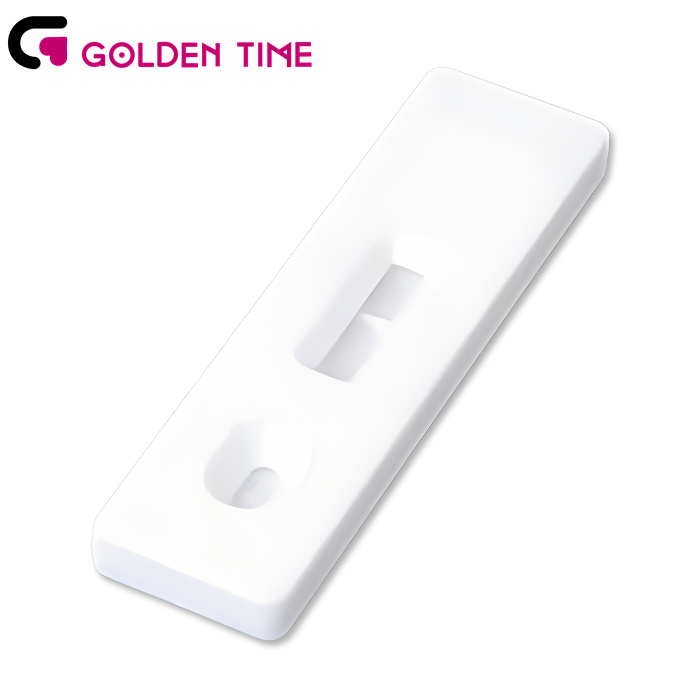What does this test do? This is a home-use test kit to measure human chorionic gonadotropin (hCG) in your urine. You produce this hormone only when you are pregnant.
What is hCG? hCG is a hormone produced by your placenta when you are pregnant. It appears shortly after the embryo attaches to the wall of the uterus. If you are pregnant, this hormone increases very rapidly. If you have a 28 day menstrual cycle, you can detect hCG in your urine 12-15 days after ovulation.
What type of test is this? This is a qualitative test -- you find out whether or not you have elevated hCG levels indicating that you are pregnant.
Why should you do this test? You should use this test to find out if you are pregnant.
How accurate is this test? The accuracy of this test depends on how well you follow the instructions and interpret the results. If you mishandle or misunderstand the test kit, you may get poor results.
Most pregnancy tests have about the same ability to detect hCG, but their ability to show whether or not you are pregnant depends on how much hCG you are producing. If you test too early in your cycle or too close to the time you became pregnant, your placenta may not have had enough time to produce hCG. This would mean that you are pregnant but you got a negative test result.
Because many women have irregular periods, and women may miscalculate when their period is due, 10 to 20 pregnant women out of every 100 will not detect their pregnancy on the first day of their missed period.
How do you do this test? For most home pregnancy tests, you either hold a test strip in your urine stream or you collect your urine in a cup and dip your test strip into the cup. If you are pregnant, most test strips produce a colored line, but this will depend on the brand you purchased. Read the instructions for the test you bought and follow them carefully. Make sure you know how to get good results. The test usually takes only about 5 minutes.
Plastic Empty Cassette
The different tests for sale vary in their abilities to detect low levels of hCG. For the most reliable results, test 1-2 weeks after you miss your period. There are some tests for sale that are sensitive enough to show you are pregnant before you miss your period.
You can improve your chances for an accurate result by using your first morning urine for the test. If you are pregnant, it will have more hCG in it than later urines. If you think you are pregnant, but your first test was negative, you can take the test again after several days. Since the amount of hCG increases rapidly when you are pregnant, you may get a positive test on later days. Some test kits come with more than one test in them to allow you to repeat the test.
Is this test similar to the one my doctor uses? The home pregnancy test and the test your doctor uses are similar in their abilities to detect hCG, however your doctor is probably more experienced in running the test. If you produce only a small amount of hCG, your doctor may not be able to detect it any better than you could. Your doctor may also use a blood test to see if you are pregnant. Finally, your doctor may have more information about you from your history, physical exam, and other tests that may give a more reliable result.
Does a positive test mean you are pregnant? Usually, yes, but you must be sure to read and interpret the results correctly.
Do negative test results mean that you are not pregnant? No, there are several reasons why you could receive false negative test results. If you tested too early in your cycle, your placenta may not have had time to produce enough hCG for the test to detect. Or, you may not have waited long enough before you took this test.
If you have a negative result, you would be wise to consider this a tentative finding. You should not use medications and should consider avoiding potentially harmful behaviors, such as smoking or drinking alcohol, until you have greater certainty that you are not pregnant.
You will probably recognize incorrect results with the passage of time. You may detect false negatives by the unexpected onset of menses (regular vaginal bleeding associated with “periods”.) Repeat testing and/or other investigations such as ultrasound may provide corrected results.


